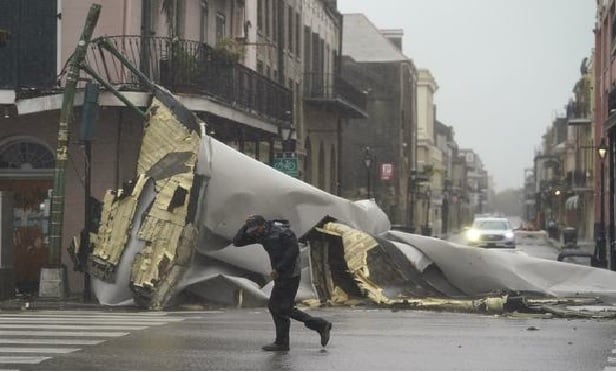 A man passes by a section of roof that was blown off of a building in the French Quarter by Hurricane Ida winds, Sunday, Aug. 29, 2021, in New Orleans. (Photo: Eric Gay/AP)
A man passes by a section of roof that was blown off of a building in the French Quarter by Hurricane Ida winds, Sunday, Aug. 29, 2021, in New Orleans. (Photo: Eric Gay/AP)
Ida struck New Orleans on Sunday, August 29, 2021, as a Category 4 hurricane. Katrina, on the other hand, was a Category 3 at landfall. There are multiple differences in these two storms, as well as the preparedness of the local area. Ida traveled through Alabama, and there are multiple reports of flooding across Louisiana. LaPlace, for example, has reported 1-2 feet of flooding. This was almost entirely caused by the storm surge pushing through Lake Pontchartrain from east to west.
Recommended For You
Want to continue reading?
Become a Free PropertyCasualty360 Digital Reader
Your access to unlimited PropertyCasualty360 content isn’t changing.
Once you are an ALM digital member, you’ll receive:
- Breaking insurance news and analysis, on-site and via our newsletters and custom alerts
- Weekly Insurance Speak podcast featuring exclusive interviews with industry leaders
- Educational webcasts, white papers, and ebooks from industry thought leaders
- Critical converage of the employee benefits and financial advisory markets on our other ALM sites, BenefitsPRO and ThinkAdvisor
Already have an account? Sign In Now
© Touchpoint Markets, All Rights Reserved. Request academic re-use from www.copyright.com. All other uses, submit a request to [email protected]. For more inforrmation visit Asset & Logo Licensing.







